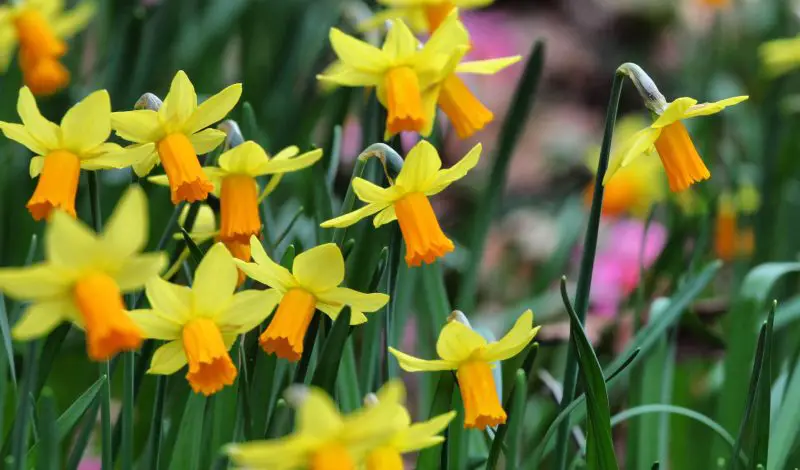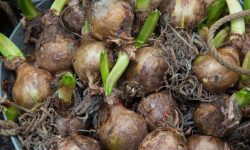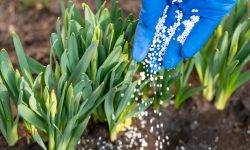Daffodils are among the first flowers to announce the arrival of spring, their bright yellow blooms symbolizing renewal and warmth after a long winter. But to keep these cheerful flowers healthy and blooming year after year, they need more than sunshine and rain. Proper care, from planting to post-bloom maintenance, determines whether your daffodils will thrive or fade. Many gardeners overlook the details that make all the difference — soil type, sunlight exposure, watering rhythm, and the right timing for feeding.
Learning how to care for daffodils ensures not only vibrant flowers but also stronger bulbs that multiply naturally over time. Whether you’re growing them in garden beds or containers, the key lies in understanding their seasonal needs. This guide reveals expert tips to help your daffodils flourish — from planting techniques and feeding schedules to pruning, dividing, and long-term preservation — so your spring garden bursts with color, life, and lasting beauty.
Understanding Daffodil Growth and Seasonal Needs

To care for daffodils successfully, you first need to understand their complete growth cycle. Daffodils are hardy perennials that thrive on a predictable rhythm of growth, bloom, and dormancy. The cycle begins in late winter when soil temperatures start to rise. The bulbs awaken underground, sending up green shoots that quickly develop into strong stems and leaves. During this time, the plant relies on nutrients stored in the bulb from the previous year. Adequate sunlight, moisture, and balanced soil conditions are vital for proper leaf and bud formation. This early growth phase sets the foundation for a season of vibrant, long-lasting blooms.
Once flowering begins, the bulb expends most of its stored energy producing blossoms. After the flowers fade, the daffodil enters a crucial recovery stage where the leaves remain green and continue photosynthesizing. This process replenishes the bulb’s internal reserves, preparing it for next year’s growth. Many gardeners make the mistake of cutting the foliage too soon for aesthetic reasons, but doing so halts nutrient absorption and weakens the bulb. It’s essential to let the leaves yellow and die back naturally, signaling that the bulb has fully recharged.
As late spring turns to summer, daffodils enter dormancy. The foliage disappears, and the bulb rests quietly beneath the soil surface. During this period, it’s important to reduce watering and stop fertilizing to prevent rot. A layer of mulch can help regulate soil temperature and moisture levels. Recognizing and respecting these natural stages allows gardeners to time their care properly, resulting in stronger bulbs, healthier foliage, and brighter blooms year after year.
Choosing the Right Location and Soil for Daffodils
The success of daffodils begins long before they bloom — it starts with where you plant them. Daffodils thrive best in areas that receive full sun for at least six hours a day. While they can tolerate partial shade, too little sunlight often leads to weak stems and fewer flowers. Morning sun with light afternoon shade is ideal, especially in warmer regions where intense midday heat can dry the soil too quickly. Daffodils also need good air circulation to prevent fungal diseases, so avoid overcrowded garden spots or areas shaded by dense trees and shrubs. The right location gives your bulbs the energy they need to produce brilliant, upright blooms each spring.
Soil quality plays an equally vital role in daffodil care. These bulbs prefer loose, well-draining soil that allows air and moisture to move freely. Heavy clay soil retains too much water, leading to root rot and bulb decay. If your garden has dense or compacted soil, improve it by mixing in organic matter such as compost, leaf mold, or sand to enhance drainage. Raised beds or slightly sloped areas work wonderfully for daffodils since excess water can flow away naturally. Properly prepared soil supports deep root development and prevents moisture stress during dormancy.
Daffodils perform best in soil with a slightly acidic to neutral pH, ideally between 6.0 and 7.0. Testing your soil before planting helps ensure optimal nutrient absorption. If the soil is too acidic, add lime; if too alkaline, mix in sulfur or organic compost. A balanced, nutrient-rich foundation ensures bulbs remain vigorous year after year. When planted in the right location and soil, daffodils grow stronger, bloom brighter, and multiply naturally over time.
Planting Daffodils Correctly for Strong Growth
Planting daffodils correctly is one of the most important steps for achieving healthy, long-lasting blooms. The best time to plant is in early to mid-fall, when soil temperatures range from 50°F to 60°F (10–15°C). This timing allows bulbs to establish strong roots before winter sets in. If planted too early, bulbs may sprout prematurely and become vulnerable to frost damage. Too late, and they won’t develop roots in time to survive cold weather. Always select a location that receives at least six hours of sunlight and drains well. Before planting, loosen the soil to a depth of 10 to 12 inches (25–30 cm) to encourage deep rooting and prevent water stagnation.
The proper planting depth and spacing are crucial for growth and flower quality. As a general rule, bulbs should be planted at a depth three times their height — about 6 inches for standard daffodils. Miniature or smaller varieties can be placed slightly shallower, around 4 inches. Leave about 4 to 6 inches between each bulb to allow airflow and prevent overcrowding. Place each bulb with its pointed tip facing upward and its base resting flat on the soil. Once positioned, cover gently with loosened earth and press lightly to remove air gaps without compacting the soil too tightly.
After planting, water thoroughly to settle the soil and activate root development. A light layer of mulch helps retain moisture and protect bulbs from sudden temperature shifts. Avoid overwatering, especially before dormancy, since excess moisture leads to rot. In regions with harsh winters, an extra mulch layer adds insulation against freezing. Gardeners in mild climates should monitor soil moisture more closely, ensuring bulbs don’t dry out during winter months. With careful planting and early-season attention, daffodils will establish strong roots, multiply naturally, and return each spring with fuller, more vibrant blooms.
Watering and Feeding Daffodils the Right Way
Watering Daffodils Properly
Watering daffodils may seem simple, but timing and balance are essential to prevent rot while promoting healthy growth. Daffodils prefer evenly moist soil during their growing season but cannot tolerate standing water. Right after planting in the fall, water thoroughly to help the bulbs settle and encourage root development. Continue watering lightly every one to two weeks if rainfall is scarce. During spring growth and blooming, consistent moisture is crucial, as the bulbs draw heavily on stored and absorbed water to support strong stems and flowers. However, overwatering or heavy clay soils can suffocate roots, leading to fungal infections and bulb rot.
Once the blooms fade and the foliage begins to yellow, gradually reduce watering. This signals the plant’s transition into dormancy, when the bulbs need drier conditions to rest and recharge. Stop watering entirely once the leaves have withered and disappeared. In rainy climates, improving drainage with compost, sand, or raised beds helps protect bulbs from excessive moisture. For container-grown daffodils, ensure pots have adequate drainage holes and use lightweight soil mixes. Balanced watering throughout each growth phase prevents stress, encourages nutrient absorption, and ensures bulbs remain strong enough to bloom beautifully the following season.
Feeding Daffodils for Healthy Blooms
Feeding daffodils at the right times ensures vigorous growth, strong bulbs, and abundant flowers. The best time to fertilize is twice per year — once in early spring as shoots appear and again right after flowering. Use a low-nitrogen, high-phosphorus fertilizer such as 5-10-10 to encourage root and flower development rather than excess leaf growth. Scatter fertilizer evenly around the base of the plants, keeping it a few inches away from stems to avoid burn. Water thoroughly afterward to help nutrients reach the roots. Balanced feeding during these stages builds resilience and ensures reliable blooming cycles.
Avoid overfertilizing, which can damage roots and lead to poor flowering. Daffodils also benefit from natural compost or bone meal worked into the soil before planting. These slow-release nutrients sustain bulbs over time without overwhelming them. In sandy soils, light feeding once more in midspring may be necessary since nutrients leach quickly. After flowering, a gentle fertilizer boost helps bulbs store energy for next year. Healthy soil paired with smart feeding habits strengthens bulbs and guarantees a breathtaking spring display of color, year after year.
Pruning and Post-Bloom Daffodil Care
Caring for daffodils after they bloom is one of the most overlooked yet essential parts of keeping them healthy year after year. Once the flowers fade, remove the spent blooms by cutting the flower stem just below the head. This process, known as deadheading, prevents the plant from forming seeds and allows it to redirect its energy toward replenishing the bulb. However, it’s crucial to leave the green stems and leaves intact. The foliage continues photosynthesizing, turning sunlight into nutrients stored inside the bulb for next spring’s growth. Cutting the leaves too soon interrupts this process and leads to weak or no blooms the following season.
After deadheading, continue watering the plants regularly for several weeks, especially during dry spells. During this time, you can also apply a light feeding of low-nitrogen fertilizer to boost energy storage in the bulbs. Once the leaves naturally begin to yellow and wither, it signals the end of the growing season. Avoid bending, tying, or braiding the foliage — a common mistake that restricts light exposure and reduces the plant’s ability to photosynthesize. Allow the leaves to die back completely before removing them to keep the bulbs strong and fully nourished.
When the foliage is fully dry, you may choose to leave the bulbs in the ground or dig them up for division and storage. If they remain in the soil, apply a light layer of mulch to protect them through dormancy. For bulbs that are lifted, dry them in the shade and store them in a cool, ventilated space until replanting in fall. Proper post-bloom care not only extends the life of your daffodils but also guarantees fuller, brighter blossoms with every new spring.
Dividing and Transplanting Daffodils for Better Blooming
Over time, daffodil bulbs multiply underground, forming dense clusters that compete for space and nutrients. While this natural spreading is a sign of healthy growth, overcrowding eventually leads to fewer flowers and smaller blooms. Dividing daffodils every three to five years helps rejuvenate the bulbs and restore their vigor. The best time to divide them is in late spring or early summer, after the foliage has turned yellow and died back naturally. At this stage, the bulbs have finished storing energy and entered dormancy, making them easier to handle without damage. Avoid dividing them while the leaves are still green, as the bulbs are actively replenishing their nutrients.
Start by gently loosening the soil around the clump using a garden fork or hand trowel. Lift the bulbs carefully from beneath to avoid cutting or bruising them. Shake off the soil and separate the bulbs by hand, keeping only the largest, healthiest ones for replanting. Smaller offsets can be stored or replanted elsewhere to expand your garden. Inspect each bulb closely for rot, mold, or insect damage, and discard any that appear soft or discolored. Before replanting, allow the bulbs to dry in a shaded, airy location for a few hours. This step helps reduce moisture and prevents fungal infection once returned to the soil.
When replanting divided bulbs, choose a new location with well-drained, fertile soil and full sunlight. Plant each bulb at a depth of about six inches, spacing them four to six inches apart. Water well after planting to help roots establish quickly. Dividing and transplanting not only improves flowering but also revitalizes the entire daffodil bed, ensuring larger, healthier blooms for years to come.
Common Problems and How to Fix Them
Yellowing Leaves Too Early
When daffodil leaves turn yellow prematurely, it’s often a sign of stress caused by poor soil nutrition, overwatering, or insufficient sunlight. Daffodils need at least six hours of sunlight daily to continue photosynthesis after blooming. If grown in shaded or compacted soil, their leaves may yellow before the bulbs have finished replenishing energy. This can lead to weaker bulbs and fewer blooms the following year. Overwatering is another common cause, as soggy soil deprives roots of oxygen and promotes fungal diseases.
To fix this, ensure daffodils are planted in a sunny, well-drained location. Water only when the top layer of soil feels dry. Applying a light feeding of low-nitrogen fertilizer right after flowering can strengthen bulbs for the next cycle. Avoid cutting or tying leaves early; let them die back naturally to complete the energy transfer. With proper sunlight, balanced watering, and post-bloom care, your daffodils will recover and maintain healthy green foliage longer each season.
Daffodils Not Blooming
Daffodils that fail to bloom, a condition known as “blindness,” often suffer from overcrowding, nutrient deficiency, or improper planting depth. When bulbs are planted too shallow, they’re exposed to temperature fluctuations that disrupt growth. Overcrowded bulbs also compete for limited resources, reducing bloom quality. In other cases, removing foliage too soon after flowering deprives the bulbs of stored energy, leaving them too weak to produce flowers. Environmental stress, such as excess shade or poor soil fertility, can also play a role.
To encourage blooming, start by digging up and dividing overcrowded clumps every few years. Replant the healthiest bulbs at a depth three times their height and in nutrient-rich, well-draining soil. Feed daffodils with a phosphorus-rich fertilizer in early spring and again after blooming. Avoid high-nitrogen products, which produce lush foliage but few flowers. Allow the leaves to yellow naturally before removing them. By restoring nutrients and spacing, you’ll revive bulb strength and ensure abundant blooms the following spring.
Bulb Rot and Fungal Problems
Bulb rot is one of the most destructive problems affecting daffodils, caused primarily by poor drainage, overwatering, or infected soil. When bulbs sit in wet or compacted ground, fungal spores such as Fusarium or Botrytis thrive, attacking the bulb base and causing it to soften, discolor, and eventually decay. Early symptoms include stunted growth, yellow leaves, and an unpleasant odor around affected plants. Once rot begins, the damage spreads quickly to nearby bulbs, threatening the entire bed.
To prevent and control bulb rot, always plant daffodils in loose, well-draining soil enriched with organic matter. Avoid low-lying or clay-heavy areas that retain water. When digging bulbs, inspect each one and discard any that appear soft or moldy. Treat healthy bulbs with powdered sulfur or a mild fungicide before replanting. During the growing season, water moderately and ensure proper spacing to promote airflow. Practicing crop rotation and sterilizing tools between uses further reduces fungal spread. Consistent hygiene and soil management will keep your bulbs strong, disease-free, and ready to bloom beautifully every spring.
Seasonal Daffodil Care Guide
Spring: Blooming and Early Growth Care
Spring marks the most active phase of a daffodil’s life cycle. As new shoots emerge, water regularly to keep the soil evenly moist but never soggy. Apply a balanced, low-nitrogen fertilizer such as 5-10-10 to support strong roots and vibrant blooms. Ensure the plants receive full sunlight for at least six hours each day, as this fuels photosynthesis and flower development. Removing weeds early in the season helps daffodils absorb nutrients efficiently without competition. Regular observation also helps detect pests like aphids or slugs before they spread.
After flowering, deadhead the spent blooms but leave the stems and leaves intact. The foliage continues to produce energy that feeds next year’s bulbs. Keep watering until the leaves turn yellow naturally. Avoid trimming or tying foliage too soon, as this interrupts nutrient storage. Spring care focuses on balance—consistent watering, feeding, and sunlight ensure daffodils recover well after blooming and store enough strength to return even more brilliantly the next season.
Summer: Dormancy and Rest
During summer, daffodils retreat underground, entering a period of rest known as dormancy. The leaves have fully withered, and the bulbs conserve energy deep in the soil. It’s important not to water or fertilize during this time, as excess moisture can cause bulb rot. If your region experiences heavy rainfall, ensure proper drainage or cover the area with mulch to reduce saturation. For gardeners in warmer climates, lifting bulbs after the foliage dies back allows them to dry and store in cooler conditions. Avoid disturbing the bulbs unnecessarily during dormancy.
Summer is also the best time to inspect, divide, or relocate daffodil bulbs. Gently lift the clumps, separate healthy bulbs, and allow them to dry in a shaded, airy space before replanting or storing. Discard any soft, damaged, or moldy bulbs immediately to prevent disease spread. Keep stored bulbs in a cool, dark place until autumn. Providing rest and dryness during summer strengthens bulb tissues and prepares them for vigorous root growth when cooler weather returns.
Fall: Root Development and Preparation
Fall is a season of renewal for daffodils, as bulbs awaken from dormancy to establish strong root systems. This is the perfect time to plant new bulbs or replant stored ones. Choose a location with full sunlight and well-draining soil. Work organic compost or bone meal into the top layer to boost soil fertility. Plant bulbs at a depth about three times their height, with the pointed end facing upward. Water thoroughly after planting to help roots settle and begin growth. Moderate soil moisture is essential during this early rooting stage.
Avoid using high-nitrogen fertilizers in fall, as they encourage leaf growth instead of root development. A balanced or phosphorus-rich fertilizer supports root health and helps bulbs prepare for winter. Mulch the planting area with a thin layer of leaves or straw to insulate the soil from sudden cold snaps. Fall preparation ensures daffodils are strong, stable, and ready to burst into color once spring temperatures rise again.
Winter: Protection and Maintenance
Winter is a time of quiet preservation for daffodils. While the bulbs remain dormant beneath the soil, they still require a stable environment to survive freezing conditions. Apply a 2–3 inch mulch layer of straw, bark, or leaves to maintain consistent soil temperature and prevent frost damage. Avoid compacting the mulch, as bulbs need air circulation. In areas with severe winters, consider covering planting beds with breathable frost cloths for added insulation. If the ground freezes deeply, the mulch acts as a barrier against temperature fluctuations.
Check the garden occasionally to ensure mulch remains dry and intact. Overly wet mulch can lead to mold or rot. In mild climates, where daffodils may start sprouting early, remove part of the mulch once shoots appear to prevent overheating. Avoid fertilizing or watering during winter, as dormant bulbs cannot absorb nutrients effectively. Proper winter protection keeps bulbs safe from frost, pests, and excessive moisture, ensuring they emerge strong and healthy with the first warmth of spring.
FAQs About Caring for Daffodils
How often should I water daffodils?
Daffodils need consistently moist soil during growth and blooming. Water once a week if there’s no rain, ensuring the soil doesn’t become waterlogged. After flowering, reduce watering gradually and stop once the leaves turn yellow. Avoid overwatering during dormancy to prevent bulb rot.
When should I fertilize daffodils?
Fertilize daffodils twice a year — once in early spring as shoots emerge, and again after blooming. Use a low-nitrogen, high-phosphorus fertilizer like 5-10-10 to encourage root and flower growth. Always water after applying fertilizer to help nutrients reach the bulbs effectively.
Can daffodils grow in pots or containers?
Yes, daffodils grow beautifully in pots if they have proper drainage and rich, well-aerated soil. Use a potting mix with compost and sand. Place containers in full sunlight and keep soil evenly moist. After blooming, allow foliage to die back before storing bulbs for next season.
Why are my daffodils not blooming?
If daffodils fail to bloom, the bulbs may be overcrowded, planted too shallow, or lacking nutrients. Divide clumps every few years and replant bulbs deeper. Ensure they receive full sunlight and balanced fertilization. Allow foliage to die back naturally so bulbs can store enough energy for next year.
How long do daffodils last in the garden?
With proper care, daffodils can bloom beautifully for decades. Each bulb may flower for five to seven years before needing division. Regular watering, fertilization, and sunlight keep them vigorous. By rejuvenating the soil and dividing bulbs periodically, daffodils will return stronger and brighter every spring.
Conclusion: Bringing Out the Best in Your Daffodils
Caring for daffodils combines timing, patience, and attention to detail. When planted in healthy soil, given proper sunlight, and nourished at the right moments, these flowers reward you with unmatched beauty every spring. From watering and fertilizing to dividing and protecting bulbs, each step strengthens their vitality. Consistent care transforms ordinary blooms into a brilliant display that returns year after year. Daffodils don’t just brighten gardens — they remind us that with steady effort and gentle care, renewal always follows every season’s rest.






